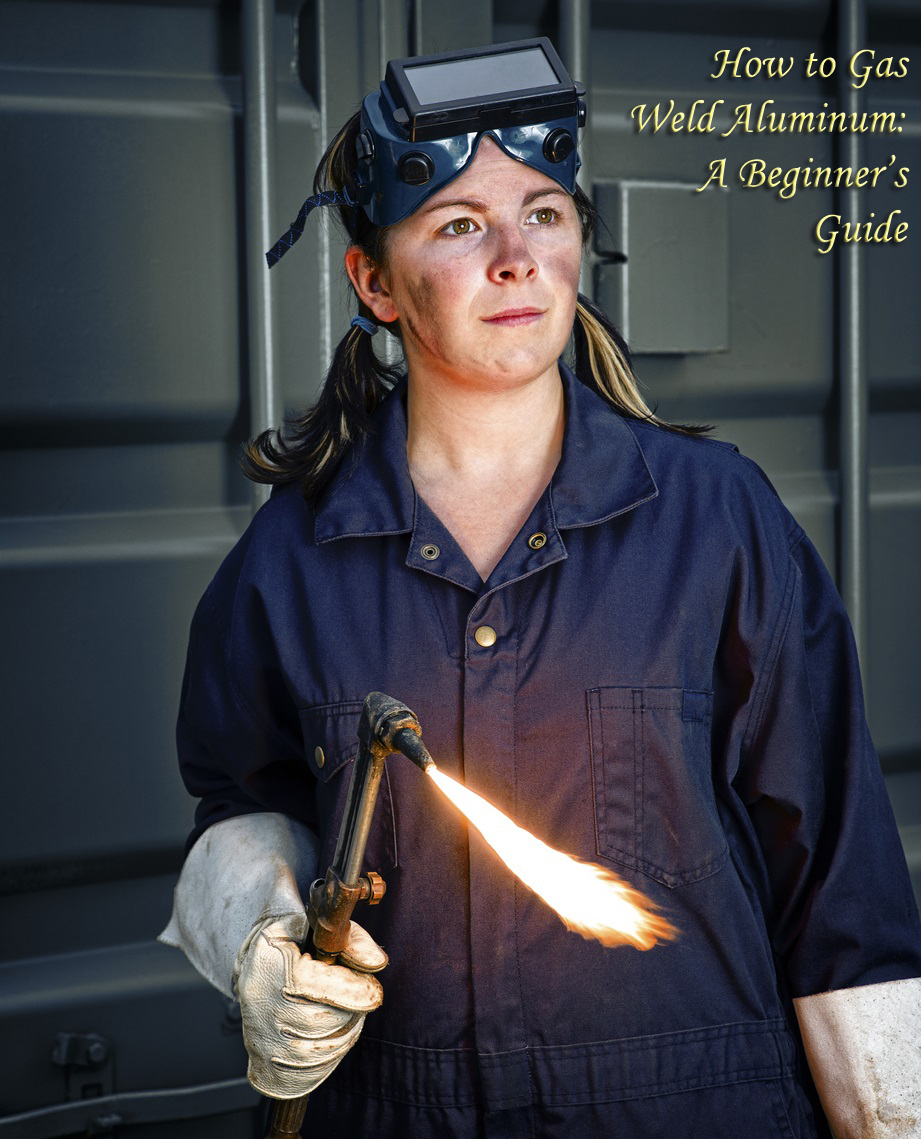
Master gas welding aluminum to build a valuable, in-demand skill. Many industries use aluminum because it stays flexible, resists corrosion, and handles lightweight applications. Aluminum appears in almost every system that needs ductile fracture resistance.
To weld aluminum correctly, apply the right knowledge, skills, and tools to form a strong bond.
Follow this step-by-step guide to gas weld aluminum. Use the listed tools and supplies to complete your next project successfully.
How to Gas Weld Aluminum
Step One: Preparation
The first step to gas weld aluminum is breaking the oxide layer. The oxide melts at 3722°F (2050°C), but aluminum melts at just 1221°F (660°C). This means you need a flame about three times hotter than aluminum can handle to break through the oxide.
This process creates risk. Many aluminum welding rods require high heat. When you break the oxide layer, you can quickly melt the aluminum.
Prevent this by preparing the aluminum correctly. Clean your workspace. Remove grease, oil, and dirt. Leftover debris burns. Scrub the oxide layer with a stainless steel brush or synthetic fleece. Aluminum re-oxidizes within minutes. Clean again if needed.
Super Alloy 5 simplifies this process. Its flux breaks through dirt, oil, and oxidation without extra prep. You can go straight to welding.
Tip:
When you gas weld aluminum that’s thicker, preheat the workpiece. This helps keep heat from escaping too quickly during welding.
Step Two: Selecting Your Gas Torch and Rods
Much like anything in life, you have more than one option you can utilize when it comes to gas welding aluminum. Though there are several processes like the MIG welding process and the plasma one, they each entail going with the right rods/equipment to translate your goals into realities. With that being said, the most common rods you can decide between is brazing vs. soldering.
In general, brazing is defined as using a filler metal with a liquidus above 842°F (450°C), and soldering features a filler metal with a liquidus of 842°F (450°C) or less. All in all, choosing the right gas torch and rod all depends on what your gas welding objectives entail. For example, if you need a high-strong joint and/or fatigue resistance, then the Super Alloy 5 brazing rod would be ideal. If you need something lower and easily reversible, then go with the Super Alloy 1 solder.
Step Three: Choosing The Right Shielding Gas
Choose your shielding gas carefully. Most welders use argon or an argon mix when gas welding aluminum. The material thickness determines your choice.
Use pure argon for sheets up to 12.5 mm thick. For thicker sheets, mix helium with argon. Helium raises the temperature and improves weld flow. Adjust the helium mix between 25% and 75% based on your setup.
Check the dew point of your shielding gas. Argon 4.6 is the standard. It provides 99.996% purity and a dew point of -62°C.
Moisture can still enter your gas lines. Moisture raises the dew point and creates welding problems. Inspect your gas lines regularly. Keep them clean and dry.
Step Four: After Gas Welding Aluminum
When you finish your gas weld aluminum project, you may need to harden the material. This depends on the type of aluminum alloy you used.
Some aluminum alloys can be hardened. These include AlCuMg, AlZnMg, AlMgSi, and AlZnMgCu. Other alloys, like AlSiCu, AlMgMn, AlMg, AlMn, and AlSi, are non-hardening.
If you’re working with a hardening alloy, you can control the aging process. You need to select the right temperature to trigger changes in the metal’s lattice structure and mechanical properties.
If you choose the wrong temperature, you can cause the alloy elements to dissolve too soon. This leads to poor distribution and weakens the final result.
Always match your aging process to the specific alloy you’re using to get strong, reliable welds.
What is the Difference Between Gas Welding and Brazing?
As defined by the American Welding Society, gas welding is “a group of welding processes wherein coalescence is produced by heating with a gas flame or flames, with or without the application of pressure, and with or without the usage of a filler metal.”
Brazing is defined as “a group of joining processes that produce coalescence of materials by heating them to the brazing temperature in the presence of a filler metal having a liquidus above 840°F (450°C) and below the solidus of the base metal. The filler metal is distributed between the closely fitted faying surfaces of the joint by capillary action.”
The main difference between the two processes is brazing does not melt and fuse the parent metal with the filler rod.
Conclusion
Gas welding aluminum takes skill, careful steps, and attention to detail. It’s more complex than welding steel, and it can feel overwhelming at first.
There are many factors to control, but solid preparation and the right tools make all the difference. If you follow each step carefully, you can expect strong, reliable results. With practice, your gas weld aluminum projects can meet—and even exceed—your expectations.
Do you have questions, comments, or need help navigating the right welding equipment to use? If so, don’t hesitate to reach out to the Muggy Weld team today for qualified, tailored support.
